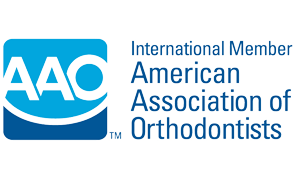We all know brushing is important for great oral hygiene, but did you know flossing is just as important? Flossing gets plaque and food particles your toothbrush can’t reach, which improves the cleanliness of your teeth and reduces bad breath. But flossing with braces can be challenging.
You probably learned about flossing at a young age, but you may not know everything there is to know about it. When’s the best time to floss? How often should you floss? How do you floss with braces?
Smith and Davis Orthodontics knows the facts about flossing and how important flossing daily is for your teeth and overall health. Here are a few facts to inspire fabulous flossing!

Benefits of Flossing
Flossing has more benefits than you might realize. Yes, flossing cleans your teeth, but do you know how much? Flossing cleans a whopping 35% of the surface of your tooth! Flossing removes plaque from over a third of your tooth. Why is that so important? Plaque eats away at your tooth’s enamel, which is the hard outer shell of your tooth. Plaque left to sit hardens and becomes tartar, which can trap plaque against the tooth. All of this can lead to tooth decay, which causes cavities. Flossing removes the plaque and prevents tooth decay, which also prevents cavities.
Flossing also prevents gum disease by clearing away plaque and food particles that can irritate your gums. Prolonged gum irritation can get worse, leading to gum disease. Your gums will become so red and irritated that they will start to bleed. They also will pull away from your teeth. This exposes your tooth to more plaque, and it exposes the more vulnerable tooth root to the acidity of plaque. Gum disease can eventually lead to tooth loss.
There’s another thing flossing helps with: bad breath. It’s true! Plaque contains bacteria that can give you bad breath. Brushing helps reduce bad breath, but flossing helps reduce it even more! The cleaner your teeth, the less bacteria and bad breath you have.
The healthier your teeth and gums are, the healthier you are. Gum disease can lead to infection, which doesn’t just make your mouth feel bad. Infection can spread, causing more tooth loss and making you even sicker than before. That’s why flossing is important, not just to your oral health but to your overall health.

Benefits of Flossing Teeth With Braces
Flossing with braces has more benefits than you might realize, and it’s worth the extra time it takes to get around all those wires and brackets. Yes, flossing cleans your teeth, but do you know how much?
Flossing cleans a whopping 35% of the surface of your tooth! Why is that so important? Plaque eats away at your tooth’s enamel, which is the hard outer shell of your tooth. Plaque left to sit hardens and becomes tartar, which can trap plaque against the tooth.
All of this can lead to tooth decay, which causes cavities. For braces patients, this can delay treatment while the cavities are fixed. Flossing removes the plaque and prevents tooth decay, which also prevents cavities.
Flossing also prevents gum disease by clearing away plaque and food particles that can irritate your gums. Your gums can become so red and irritated that they will start to bleed. This is the beginning stage of gum disease.
Without treatment for gum disease, your gums will pull away from your teeth. This exposes your vulnerable tooth root to the acidity of plaque. Gum disease can eventually lead to tooth loss.
Braces teeth floss habits also help with bad breath. Plaque includes bacteria that can give you bad breath. Brushing helps reduce bad breath, but flossing helps reduce it even more! The cleaner your teeth and braces, the less bacteria and bad breath you have.
The healthier your teeth and gums are, the healthier you are. Gum disease can lead to infection, which doesn’t just make your mouth feel bad. Infection can spread, causing more tooth loss and making you even sicker than before. That’s why flossing is important not just to your oral health but to your overall health.

How Do I Floss With Braces?
Flossing is important, but flossing properly is even more important. There is a lot more to flossing than just running a string between front teeth in 3.4 seconds, especially with braces. You must know how to floss with braces properly to get the best results.
Best Way to Floss With Braces
Can you floss with braces? At first glance, it looks impossible to get dental floss between teeth with all those brackets and wires in the way. How do you floss with braces in the way?
The best way to floss with braces — or even without — is to start with true dental floss. Proper dental floss is a specially made string lightly coated in wax so it moves between the teeth easier and won’t irritate the gums. No, regular thread won’t cut it, but it may cut your gums.
Move the waxed dental floss between your teeth. If you have braces, use a floss threader to get under your archwire. There are two types of floss threaders. One looks like a shoestring, with a thin piece of plastic on the end of a long string of dental floss.
The other looks like a big, plastic needle. You thread the floss through the eye of the needle, then slip the floss threader over or under your archwire and between your teeth, pulling the dental floss through.
Move the floss up the side of one tooth and down the side of the other, then switch to the other side. Then, move to the next two teeth and repeat, keeping the dental floss on the tooth side of the ard.
When Are You Supposed to Floss?
Many people think you floss after you brush. Actually, you want to floss BEFORE you brush. Why? Brushing gets the rest of the parts of your teeth squeaky clean. Then you come along and floss … and you get food particles and plaque all over them again.
Gross, right?
If you floss first, then all that icky stuff you got out from between your teeth gets brushed away with the rest of the icky stuff on your teeth. So, be sure to floss first and brush afterward.
How Often Should You Floss?
You should brush your teeth at least twice a day, though ideally you should brush after every meal. Should you floss that often? Unless you’re highly prone to gum disease (which some people are), once a day is fine.
If you cannot brush after a meal, you should rinse your mouth and braces with water. This will help keep food from becoming embedded around your braces brackets and make it easier to remove when you brush later.
Ideally, you should floss at night before bed to remove all of the plaque and food particles you’ve acquired during the day.

Flossing Tools
Part of flossing the right way is using the right flossing tools. You might think braces and flossing is pretty complicated, but there are more options nowadays that make flossing easier than ever.
Waxed vs. Unwaxed
Most dental floss is waxed so it slides between the teeth more easily. This is especially helpful if your teeth are crowded together. Some people don’t like or can’t use waxed floss, so unwaxed floss is available. Either one works fine, as long as it’s true dental floss.
Flossing Sticks and Floss Threaders
Flossing tools for easy flossing have become popular, particularly flossing sticks with a small piece of floss between two plastic tongs. You use the stick to floss your teeth, then toss it out when you’re finished. The single-use tools make it a little easier to maneuver the floss.
Patients wearing braces want to use floss threaders. Remember those big needle things we mentioned before? These tools use regular dental wax. You thread the wax through the eye of the needle, then slip the needle under your archwire and between your teeth. That way, you can floss the parts of your teeth below the archwire and clean the whole tooth. This is much easier than traditional flossing.
Other Flossing Options
While those are the most popular options, they aren’t the only ones. Many people prefer using a water flosser that shoots a high-speed stream of water between the teeth to floss. Air flossers work similarly. They don’t have the same scrubbing power as dental floss, but they can be used to supplement your dental floss use.
An interdental brush is another option. This tool looks like a tiny spiral brush on a stick. The brush gets between teeth to scrub like a toothbrush would.

Are Your Gums Bleeding When Flossing?
What happens if you floss and your gums bleed? If it only happens once, it may be something simple like a new dental floss that has irritated your gums. Your gums could also bleed if you floss too aggressively. You want to apply gentle pressure when flossing.
If your gums bleed regularly when you floss, you may have gingivitis, which is the beginning stage of gum disease. Often, it means you’re not practicing good oral hygiene regularly.
Contact your dentist or Smith and Davis Orthodontics right away. We may need to check your gums and see if there are any other factors involved, such as side effects from certain drugs or genetic factors. Don’t wait, because the longer gingivitis goes without treatment, the better the chance it could develop into something more serious that could lead to tooth loss.

Get More Flossing Facts
Flossing is a key tool for great oral hygiene. It’s just as important as brushing your teeth. But flossing around braces isn’t always easy. If you find it challenging, just ask the team at Smith and Davis Orthodontics, and we can show you how to floss with braces like a pro!
We serve patients in the Rogers, AR, area and are always happy to help when we can. Schedule an appointment with us to see how we can help!






